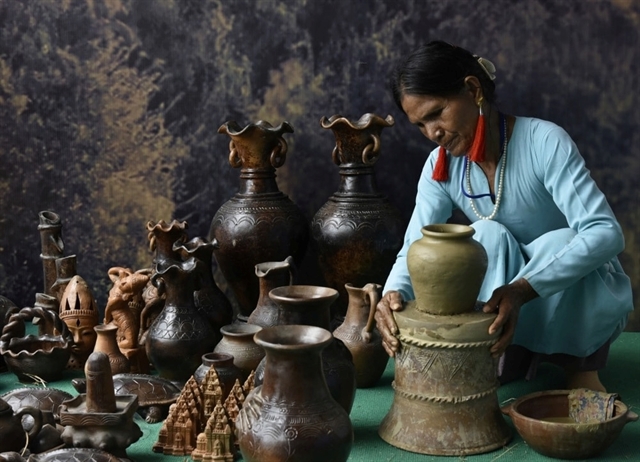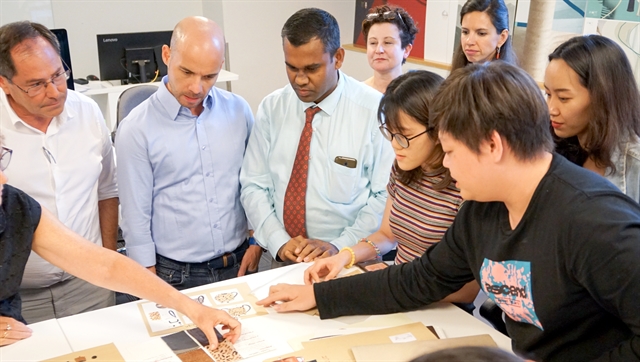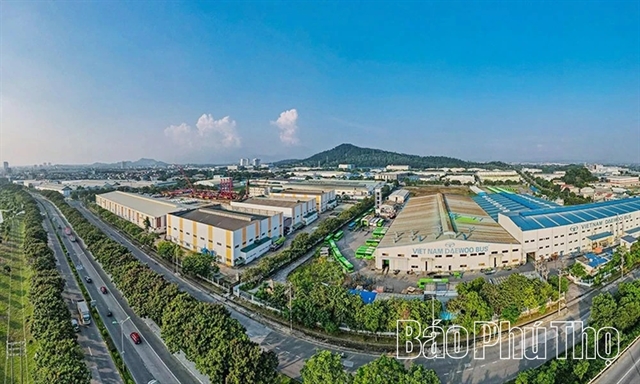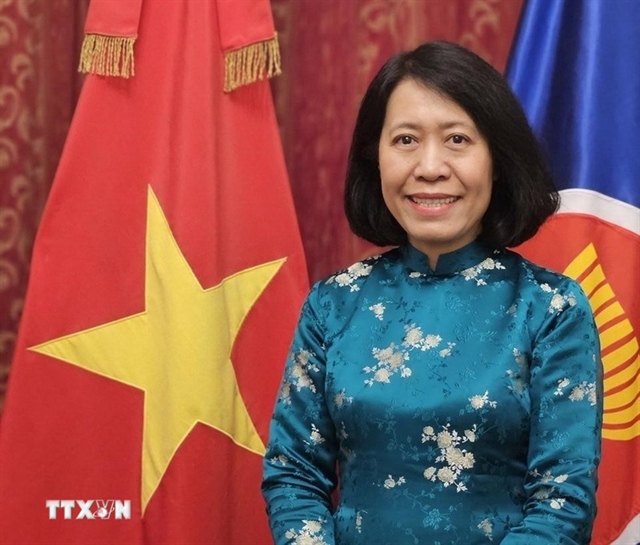 Life & Style
Life & Style

With more than 18 years of experience in fashion and textiles, Doctor Rajkishore Nayak always focuses on achieving excellent results. His objective is to become a global name in fashion and textile education and research. He currently lives in Việt Nam and is educating Vietnamese students in fashion production.

|
| Dr Rajkishore Nayak at work with his students in fashion production. |
Minh Thu
With more than 18 years of experience in fashion and textiles, Doctor Rajkishore Nayak always focuses on achieving excellent results. His objective is to become a global name in fashion and textile education and research. He currently lives in Việt Nam and is educating Vietnamese students in fashion production.
After completing his PhD in Australia, Nayak has worked in several countries as a lecturer, author and fashion industry expert. Since 2018, he has been a senior lecturer at the School of Communication and Design, RMIT University.
One of the reasons that drove him to Việt Nam was his interest in traditional fashion and textiles.
“Việt Nam’s traditional costumes such as áo dài (traditional long dress), áo tứ thân (four-petal dress), áo nhật bình (royal casual dress) and áo bà ba (southern blouse) convey many messages on its history and culture,” said Nayak.
“In the past, many cultures around the world have been influenced by Vietnamese costumes. At present, Vietnamese costumes are still influencing the clothing sector as fashion brands such as Marks and Spencer, Metiseko and TimTay are trying to integrate the traditional designs into their product lines, making them more elegant.”
“The ethnic minority costumes of Việt Nam with colourful weaving, fringes and pompoms express the diversity of textiles,” he said, adding that the traditional costumes from each minority group were unique.
“Silk manufacturing in the country plays a significant role in the traditional designing with Vạn Phúc Village (Hà Nội) playing the leading role. This village produces silk fabrics with sophisticated weaving patterns, which are used by emerging local fashion brands.”
Nayak said he was interested in studying the Vietnamese fashion and weaving industry. However, he was also concerned that the traditional textile sector was facing challenges from fast fashion brands where speed and technology were the driving factors.
“The fast fashion brands produce cheap clothes by using new technologies, which may not be possible to manufacture in the traditional processes,” he said. “The rising labour cost creates challenges for traditional textiles to keep the product cost low as they are labour-intensive.”
In his studies and lectures, Nayak tried to send a message that green manufacturing is gaining significance in fashion supply chains.
“Fashion brands, manufacturers and retailers are increasingly preparing to adopt this new production practice in order to save our planet and people,” he said. “The use of advanced and sustainable fibres and other raw materials [renewable and biodegradable] are critical for sustainable fashion and textile manufacturing.”
“The use of natural colouring materials for dyeing and printing and natural finishes to achieve various functionalities in fabrics is also gaining impetus, as well as recycling end-of-life clothing and plastics into new textiles.”
Over the last decade, the concept of fast fashion has revolutionised the fashion industry, and new styles are available every week. The “throwaway culture” has been developed as a result of easy availability of low-priced high street clothing and the success of major brand retailers.
“Landfill and incineration remain the major methods to deal with fashion waste in developing countries,” he said. “This may be attributed to a lack of consumer awareness on issues relating to fashion and textiles, a limited number of organisations dealing with recycling and reusing, a lack of environmental control systems, financial constraints and a lack of governmental legislation.”
.jpg)
|
| Dr Rajkishore Nayak said that Việt Nam’s fashion and textile manufacturing industries need to reduce environmental pollution and achieve sustainability to survive. Photos courtesy of RMIT |
Based on his experience in the Vietnamese fashion industry, Nayak said there was still a lack of public awareness about consumer waste; solving the fashion and textile waste problem would require collaboration between the central government, regional governments, the private sector, society and other relevant stakeholders.
“Waste regulations and standards should firmly be enforced, enhanced consumer awareness for postconsumer waste should be broadcasted and translated into action, the utilisation of textile waste should be adopted to reduce the waste volume, and a closed-loop recycling system should be created to help combat this,” Nayak said.
“Hence, there is a need for green practices in all the processes of the fashion industry, starting from raw materials to the end-of-life of the garments,” he said.
“Various new emerging technologies such as nanotechnology, enzyme processing, laser processing, digital printing and plasma technology could also be explored.”
In a recent interview with Việt Nam News, Nayak admitted that Việt Nam was dependent on China for raw materials and other supplies, and facing operational challenges due to disrupted supply chains that resulted from COVID-19 citywide lockdowns in China.
“This is a major challenge which increases the manufacturing lead time and the cost of manufacturing. There is, therefore, a need for Việt Nam to become self-reliant on locally made manufacturing inputs when good fabric quality is considered.”
Reducing environmental pollution and achieving sustainability were the key factors for the country's fashion and textile manufacturing industries to maintain their competitive edge, according to the researcher. VNS




